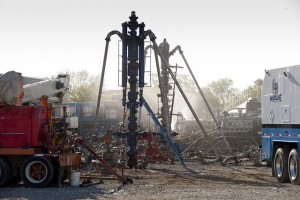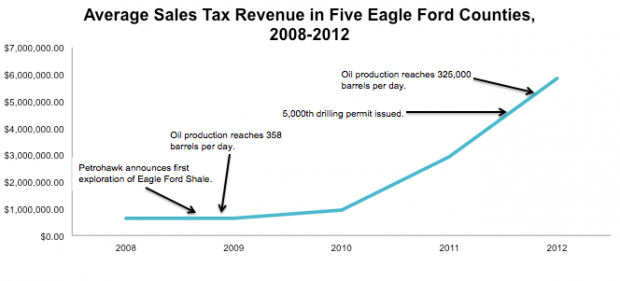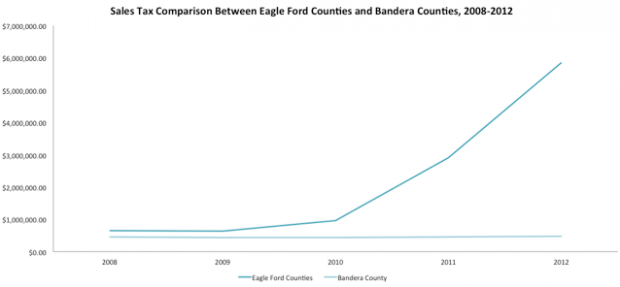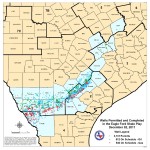A Tale of Two Counties: How Drilling Makes Some Flush With Cash
But for Those Outside the Boom, It’s Business as Usual
It’s been over four years since a drilling company first drilled for (and hit) oil and gas in the Eagle Ford Shale. Since then, the region has become an economic engine for Texas, and to some degree, the country.
While the region has seen several downsides to the current drilling boom, especially from traffic, accidents and water demands, a look at what the boom has done for coffers in the region shows just how rapidly things have changed.
Drillers have permitted over 10,000 wells, spending billions to get to the oil and gas. Over half a million barrels of oil are now being produced each day, supporting over a hundred thousand jobs.
A Closer Look at Economic Impact
StateImpact Texas recently analyzed data from the State Comptroller’s Office, which records the sales tax allocation history for most of Texas’ cities and counties. The more sales tax a municipality collects, the more goods and services it has sold. The results painted a vivid picture of just how much money is flowing through the Eagle Ford region.
StateImpact looked at sales tax records from 2008 to 2012 for five counties in the Eagle Ford region: Karnes, Atascosa, Gonzales, Live Oak, and Dimmit. We chose these counties because of the Eagle Ford’s significance to their economies, as well as data availability.
In 2008, the five counties collected an average of nearly $650,000 in sales taxes. But just four years after drilling started, the yearly average for those same counties jumped to over $5.8 million.
The region’s growth is even more impressive when you compare it to other parts of the state.
Bandera County is about 50 miles north of some of the Eagle Ford’s most prolific drilling. With a population of 20,485, it is comparable in size to the five counties included in the graph above (whose populations average about 20,214 people). This next graph shows Bandera county’s sales tax revenue compared with the five selected Eagle Ford counties over the same period:
Sales tax revenues in Bandera County have held steady at around $450,000 per year, while 50 miles south, the fracking boom has caused spending to swell exponentially.
People are spending lots of money in the Eagle Ford region, and that doesn’t look like it will stop any time soon.
Although every boom eventually busts, some experts project that production could continue for the next 20 to 30 years. That means more fracking, more spending, and potentially more growth in South Texas.





